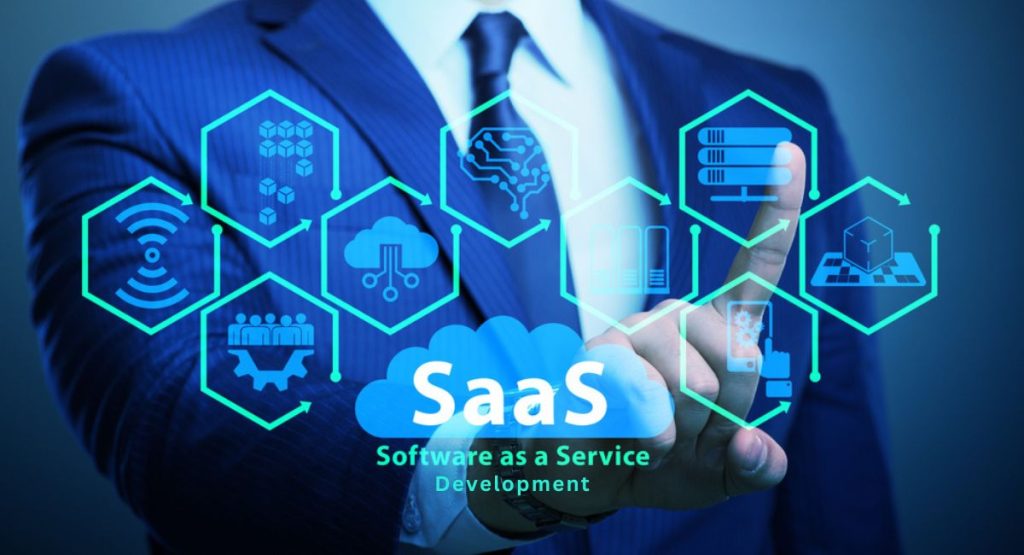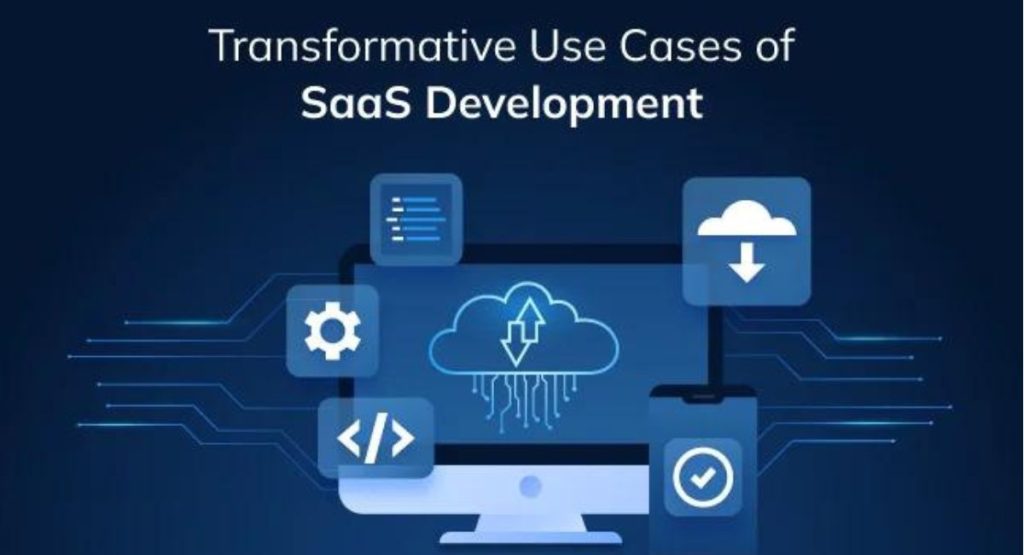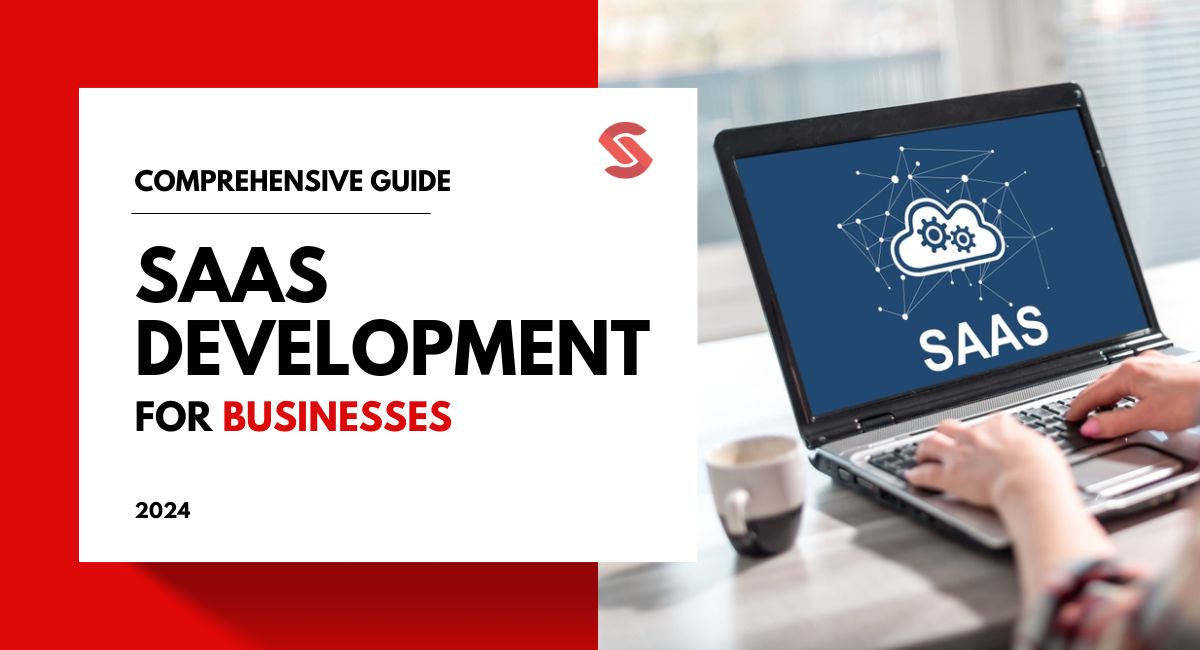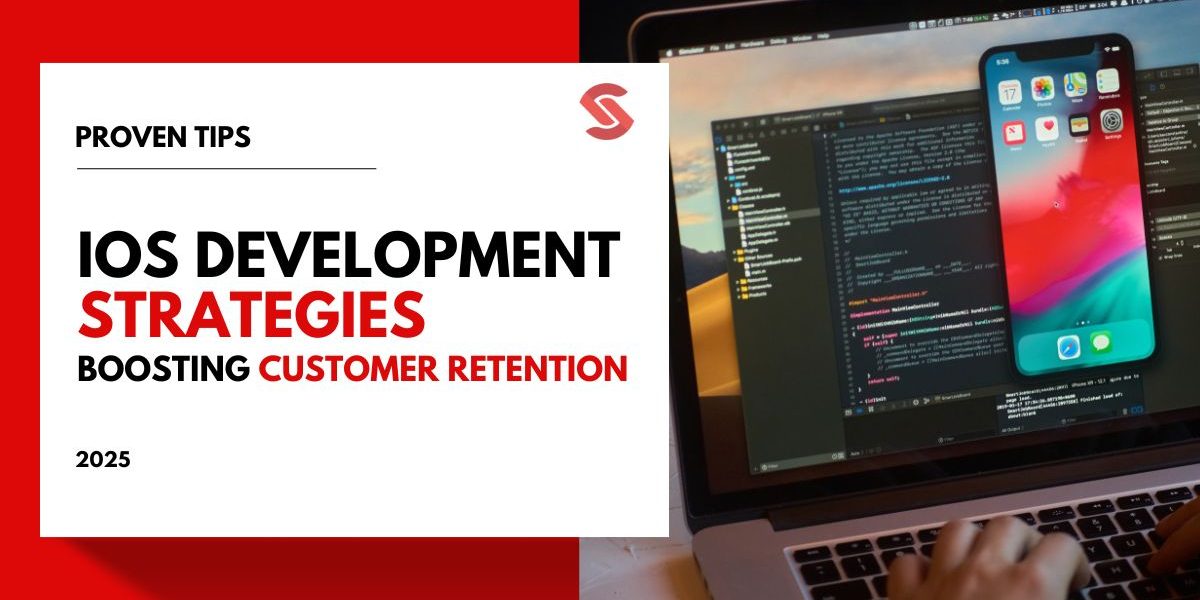As companies shift to more advanced technologies, the significance of Software as a Service (SaaS) in 2024 cannot be overstated. This guide will discuss why SaaS development is essential, emphasizing its transformative role for businesses and its impact on the global market.
We will analyze the latest trends and prospects of SaaS, providing you with essential insights and practical knowledge on how SaaS can shape business operations and market interactions in the coming year.
By the end of this guide, you’ll be equipped with the understanding need for SaaS development services effectively, ensuring your business remains competitive and agile in a tech-driven world.
Understanding SaaS Development

Understanding SaaS development involves comprehending the intricate components of cloud computing, SaaS architecture, and the software lifecycle. At its core, SaaS development utilizes cloud environments to deploy applications that are accessible over the internet. This process is supported by specific SaaS architecture, which ensures that the software efficiently scales and adapts to user demand. Additionally, understanding the entire software lifecycle, planning and design deployment and maintenance, and every step is crucial. Development frameworks provide the necessary structure and methodologies for building robust SaaS applications. Familiarizing oneself with these basics can significantly enhance the efficiency and effectiveness of the application development process.
The Concept of SaaS
SaaS, or Software as a Service, operates by hosting software centrally on the cloud, allowing for streamlined access across multiple clients. Key to its architecture are elements like multitenancy, which lets different customers use the same application while keeping their data separate and secure. Scalability is another crucial component, ensuring that services can expand in response to user demand. Additionally, API integrations play a vital role, enabling seamless interactions between different software products and optimizing the use of cloud resources. These features collectively define the functionality and efficiency of SaaS solutions.
SaaS vs. Traditional Software
SaaS development differs significantly from traditional software creation, particularly in its lifecycle stages. The process includes meticulous planning, followed by continuous integration and deployment, which ensures that updates are smoothly rolled out with minimal downtime. The maintenance phase in SaaS is also more dynamic, emphasizing ongoing improvements and rapid adaptability to user feedback and needs. This approach contrasts with traditional software, where updates and maintenance can be less frequent and more cumbersome.
Benefits of SaaS Development
Developing SaaS applications offers multiple advantages for businesses looking to stay ahead:
- Cost-effectiveness: Reduces upfront costs as maintenance and updates are handled by the provider, spreading expenses over time.
- Scalability: Easily scales with business needs without requiring significant hardware investments.
- Subscription Models: Offers flexible pricing options that can attract a broader customer base.
- Cloud Economies: Leverages cloud infrastructure for efficiency, reducing the need for physical data centers.
- Continuous Updates: Ensures software is always up-to-date without disrupting user operations.
Additionally, the subscription model inherent in SaaS facilitates a steady revenue stream and can significantly expand a business’s global reach. This makes SaaS an attractive option for businesses looking to enhance their service delivery while maintaining flexibility in a competitive market.
1. Financial Benefits of SaaS
Choosing a SaaS model offers significant financial advantages. Firstly, it ensures predictable revenue streams. Through subscription-based models, businesses can anticipate consistent income, facilitating better financial planning. Additionally, SaaS reduces upfront costs, eliminating the need for substantial initial investments. Furthermore, the return on investment (ROI) tends to be higher with SaaS compared to traditional software setups, enabling faster and more substantial returns.
2. Strategic and Operational Benefits
SaaS brings both strategic benefits and operational advantages to the table. From a strategic standpoint, it offers scalability and flexibility, allowing businesses to adapt quickly to changing market conditions. Operationally, SaaS streamlines processes enhances collaboration, and reduces IT overhead, freeing up resources for core activities. This dual impact positions SaaS as a pivotal tool in modern business strategies, driving efficiency and innovation.
Planning your SaaS application

Effective planning is pivotal for the success of your SaaS application. Start with thorough market research and identifying your target audience. Define clear objectives for your product to align with market needs. By understanding your customers and market trends, you set the stage for a successful SaaS venture. This foundational work ensures your application meets user demands and drives growth effectively.
1. Market Research Techniques
Effective market research for SaaS involves employing various techniques. Surveys help gather direct insights from potential users, while competitor analysis offers a deep understanding of market trends and competitor offerings.
Market segmentation allows for targeting specific customer segments accurately. By utilizing these strategies, businesses gain valuable insights into user preferences and market dynamics, laying a solid foundation for the success of their SaaS application.
2. Defining Product Objectives and Roadmap
Setting clear product objectives and a roadmap is vital for SaaS success. Aligning product features with business goals ensures relevance and value. To achieve this:
- Develop a comprehensive product roadmap outlining key milestones and feature prioritization.
- Regularly review and adjust the roadmap to adapt to changing market dynamics and business needs.
- Communicate the roadmap effectively across teams to ensure alignment and collaboration.
Designing and Developing Your SaaS Application

Crafting your SaaS application involves key elements such as user-centric UX/UI design, selecting an appropriate technology stack, and implementing agile development practices. Prioritize intuitive navigation and engaging interfaces for a seamless user experience. Choose a technology stack that aligns with scalability and flexibility requirements.
Choose agile methodologies for iterative improvements. Ensure responsiveness across devices and consider server-less architectures for cost-effective scalability. These elements collectively contribute to the strategic development of your SaaS application.
1. Selecting the Right Technology Stack
Choosing the right technology stack for your SaaS application is crucial. Considerations for front-end technologies include the usability and scalability of JavaScript frameworks. For back-end technologies, prioritize factors like database management and scalability. Carefully evaluating these components, businesses can ensure that their chosen technology stack aligns with the unique needs and requirements of their SaaS application.
2. Best Practices in SaaS UI/UX Design
In SaaS UI/UX design, prioritize user-centricity, accessibility, and aesthetics. Ensure interfaces are intuitive and visually appealing. Conduct A/B testing and gather user feedback to refine designs continuously. By focusing on these best practices, businesses can create effective SaaS user experiences that drive engagement and satisfaction.
Deploying and Maintaining Your SaaS Application

Deploying and maintaining a SaaS application effectively is crucial for long-term success. For deployment, leveraging cloud environments enables scalable and flexible application management. Automation plays a key role here, streamlining the release and deployment processes, which enhances consistency and reduces human error. Once deployed, continuous monitoring is vital to ensure optimal performance and to quickly address any issues. Regular updates are also essential, guided by a clear strategy that prioritizes minimal disruption to service. These updates not only fix bugs but also refine features to meet evolving user needs.
1. Deployment Strategies and Models
Choosing the right deployment strategy for SaaS applications is crucial for ensuring scalability and efficiency. Cloud service models like AWS, Azure, and Google Cloud offer robust platforms that facilitate the use of automation tools to streamline deployment processes.
These tools help manage resources dynamically, ensuring that applications can scale seamlessly as user demand increases. This approach not only optimizes operational costs but also improves deployment speed and reliability.
2. Ongoing Maintenance and Security Practices
Maintaining the reliability and security of SaaS applications requires diligent attention post-deployment. Regular software updates and effective patch management are fundamental to protecting against vulnerabilities.
Additionally, staying compliant with cybersecurity standards and data protection laws, such as GDPR, is critical. Implementing these practices ensures that both the functionality and the security of the application are maintained, which helps in building trust and providing value to users continuously.

Get a Personalized Consultation for Your SaaS Needs Today!
Advanced Topics in SaaS Development
Exploring advanced topics in SaaS development shows how technologies such as AI and machine learning are significantly impacting the field. These tools allow for the creation of intelligent, self-optimizing applications capable of managing big data efficiently. Integrating AI algorithms enhances data analytics and boosts user engagement through personalized services. Additionally, developers need to address global compliance issues to ensure that their SaaS products adhere to strict regulations across various markets, crucial for international scalability.
1. Integrating AI and Machine Learning in SaaS
Integrating AI and machine learning into SaaS applications can significantly boost their functionality and user engagement. AI enables features like predictive analytics, which anticipates user needs and improves service delivery.
ML models can tailor experiences, making interfaces more intuitive and responsive. Such technologies also power chatbots that provide instant customer support, enhancing user satisfaction and streamlining interactions within the application.
2. Global Compliance and Data Security Challenges
Understanding global compliance and data security challenges is crucial for SaaS developers. Ensuring that applications meet international laws like GDPR and HIPAA involves robust data encryption and secure cross-border data transfers.
Strategies must be put in place to protect user data and comply with various regional regulations. This proactive approach not only builds trust with users but also guards against potential legal and financial repercussions.
SaaS Development Use Cases

SaaS applications bring transformative benefits across various industries, providing tailored solutions that address specific challenges. In healthcare, SaaS enables better patient data management and improves care delivery. Financial services benefit from enhanced security and compliance features, while retail businesses leverage SaaS for improved inventory and customer relationship management. Education sectors use SaaS to streamline administration and facilitate remote learning. Each industry finds value in SaaS through its ability to adapt technology for real-world applications, driving efficiency and innovation.
1. Customer Data Integration
Customer data integration through SaaS applications offers significant benefits across different industries. By centralizing customer information in one accessible cloud platform, businesses can enhance service personalization and streamline operations.
This integration allows for more effective marketing strategies, improved customer service, and better decision-making based on comprehensive data analytics. Industries from retail to finance are leveraging these integrations to transform customer interactions and drive business growth.
2. DevOps Leadership Lessons
DevOps practices are transforming SaaS development, as CTOs share insights on their effective integration. By implementing continuous integration and deployment, companies accelerate their development cycles and enhance service reliability.
These practices, supported by advanced DevOps tools, ensure seamless updates and superior performance of SaaS platforms. Learning from real-world case studies, businesses can see how DevOps not only improves efficiency but also fosters a culture of innovation and responsiveness.
3. Benefits of SD-WAN
SD-WAN technology significantly enhances SaaS performance by optimizing network connectivity and managing bandwidth more efficiently.
By prioritizing SaaS traffic, SD-WAN ensures faster and more reliable access to cloud applications, crucial for businesses that rely on real-time data and services.
Additionally, SD-WAN reduces overall network costs by utilizing less expensive connection types and dynamically routing traffic to avoid congestion, which results in performance boosts and cost savings.
Industry-specific SaaS Development Strategies
Tailoring SaaS solutions to specific industries involves understanding unique challenges and leveraging the technology to meet those needs effectively:
- Healthcare SaaS: Developments focus on compliance with regulations like HIPAA, enhancing patient data security, and facilitating real-time collaboration across healthcare providers.
- FinTech SaaS Solutions: These prioritize robust security measures and real-time transaction processing, supporting global financial regulations and enabling personalized banking experiences.
- SaaS in Education (EdTech): Solutions enhance remote learning capabilities, integrate with educational tools, and provide scalable resources to accommodate varying student numbers.
- Custom SaaS Applications: These are designed to meet the specific operational needs of each sector, improving efficiency and service delivery.
- Industry-Specific Challenges: Each sector presents unique challenges, such as stringent compliance in finance and privacy concerns in healthcare.
- SaaS Case Studies: Demonstrating successful deployments, like a 20% increase in patient management efficiency in healthcare SaaS applications or a 30% reduction in operational costs for financial institutions using FinTech SaaS.
These strategies ensure that SaaS solutions not only solve generic business problems but also address the intricate requirements of specialized fields.
Overcoming Common SaaS Development Challenges
Solving common challenges in SaaS development requires strategic focus and robust technical solutions:
- Scalability: Ensuring the infrastructure can handle growth, developers often implement scalability testing early in the development process, aiming to support a 50% user increase annually without performance drops.
- Third-Party Integration: Integrating with external services can create compatibility issues. SaaS platforms focus on versatile API integration to seamlessly connect with a range of third-party tools and services.
- Customer Feedback: Rapid incorporation of user feedback is crucial for continuous improvement. Top SaaS developers often employ agile methodologies to iterate product features quickly, based on user responses.
- API Integration: Robust API management supports smoother integration with external systems, enhancing functionality and user experience.
- Customer Service Improvements: Investing in advanced support systems to resolve issues promptly, leading SaaS companies to report a 25% increase in customer satisfaction.
- Adapting to Evolving Customer Demands: Continuous market analysis helps adapt features to meet changing preferences, ensuring the platform remains relevant and competitive.
By addressing these challenges, SaaS developers can create more resilient and adaptable solutions that meet the needs of diverse and dynamic markets.
How Softnix is Best for SaaS Development Services?

Start Transforming Your Business with Our SaaS Development Services
Softnix stands out as a premier choice for SaaS development services, combining cost-effectiveness with a diverse range of offerings. With years of expertise in the tech industry, Softnix provides solutions that are not only innovative but also tailored to the specific needs of each client.
Our approach is heavily data-driven, enabling them to deliver strategies that are both efficient and effective in boosting business performance. Clients benefit from Softnix’s comprehensive suite of services, which ensures that all aspects of SaaS development; from initial planning to final deployment are handled with precision and care, maximizing ROI for businesses of all sizes.
Final Thoughts
As we conclude this blog about SaaS development services and its trends, it’s clear that mastering these strategies is pivotal for businesses aiming to lead and innovate in the SaaS space. The insights provided should empower you to implement strategic planning and leverage cutting-edge technologies to stay ahead. By focusing on scalability, customer-centric enhancements, and continuous improvement, you can ensure your business not only adapts but thrives in the evolving market landscape. Embrace these practices to secure your position as a market leader in the SaaS industry.
FAQs on SaaS Development and Industry Trends
1. What is SaaS and how does it benefit businesses?
SaaS, or Software as a Service, is a software distribution model where applications are hosted by a third-party provider and made available to customers over the internet. This model benefits businesses by reducing IT overhead, providing flexibility in software management, enhancing scalability, and lowering upfront costs.
2. How does SaaS differ from traditional software deployment?
Unlike traditional software that requires installation on individual machines, SaaS applications are accessed via the internet, allowing for instant updates, global accessibility, and lower maintenance costs. This cloud-based approach ensures that all users have the same version of the software, enhancing consistency and collaboration.
3. What are the key components of SaaS architecture?
Key components include multitenancy, which allows multiple users to utilize the same application with separate, secure data; scalability, to adjust resources based on demand; and API integrations, which enhance functionality and interoperability between different software systems.
4. What should businesses consider when planning a SaaS application?
Businesses should conduct thorough market research, define clear product objectives, and ensure their application aligns with user needs and market trends. Effective planning also involves choosing the right technology stack and designing with user experience in mind.
5. Can you explain the financial benefits of adopting a SaaS model?
SaaS offers significant financial benefits, including predictable revenue streams through subscription models, reduced upfront costs, and generally higher return on investment compared to traditional software setups. These aspects facilitate better financial planning and cost management.
6. What strategic and operational advantages does SaaS offer?
Strategically, SaaS provides flexibility and scalability, allowing businesses to adapt quickly to changing market conditions. Operationally, it reduces IT overhead, enhances collaboration, and streamlines processes, thereby increasing overall efficiency and productivity.
7. How important is compliance and data security in SaaS development?
Compliance and data security are critical, as SaaS providers must adhere to international laws like GDPR and HIPAA. Robust encryption methods, secure data transfers, and regular updates are essential to protect user data and ensure trust.
8. How does AI and machine learning enhance SaaS applications?
AI and machine learning can significantly improve SaaS applications by enabling features like predictive analytics, personalized user experiences, and intelligent automation. These technologies help in managing large data sets more effectively and enhancing user engagement.
9. What are some common challenges in SaaS development, and how can they be overcome?
Common challenges include scalability, third-party integrations, and adapting to evolving customer demands. Addressing these issues typically involves implementing scalable architectures, robust API management, and agile development practices to quickly respond to user feedback.
10. What role does DevOps play in SaaS development?
DevOps practices in SaaS development help streamline processes by facilitating continuous integration and deployment, enhancing software quality, and reducing time to market. This integration supports a culture of innovation and rapid adaptation to new challenges.
11. How do different industries benefit from specific SaaS solutions?
Industries benefit by adopting SaaS solutions tailored to their unique needs. For example, healthcare SaaS enhances patient data management, while FinTech solutions focus on security and compliance. Education and retail sectors also leverage SaaS to improve service delivery and operational efficiency.
12. What future trends are expected in SaaS development for 2024 and beyond?
Future trends in SaaS include the increasing use of AI and machine learning for advanced data analytics and automation, greater emphasis on security and compliance as data privacy concerns grow, and the continued expansion of SaaS across all business sectors due to its scalability and cost-effectiveness.





